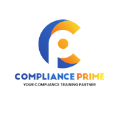We’re no longer in a world where payroll simply meant processing checks and keeping the taxman happy. Today, payroll professionals sit at the intersection of compliance, data, technology, and employee experience. And in 2025, one thing is certain: if you’re not actively updating your skills, you’re falling behind.
Artificial Intelligence is already automating calculations, detecting errors, and forecasting payroll trends. New laws and tax codes are being introduced at a pace that demands constant vigilance. Meanwhile, organizations are rethinking work altogether, with hybrid models, gig contracts, global hiring, and digital-first tools becoming the norm. The result? Payroll is becoming more complex, more strategic, and far more dynamic than it used to be.
If you want a payroll career that thrives, not just survives, you need to adapt. You need to be proactive. You need the right resources and the right tactics.
This blog will guide you through both:
- Resources to help you build up-to-date skills, stay compliant, and understand evolving payroll landscapes.
- Tactics to put that knowledge to work, stay relevant, and grow your value in any organization.
Let’s get to it.
Resources to Build a Future-Proof Payroll Skillset
Your ability to stay relevant in payroll depends on what you know, and how fast you learn what’s new. The key is to tap into the right sources of information that are credible, timely, and directly applicable to your day-to-day work.
Here are the most valuable types of resources you should be using in 2025:
1. Expert-Led Webinars from Compliance Prime
If there’s one shortcut to staying updated with real-world payroll changes, it’s learning directly from payroll experts. Compliance Prime offers a continuous stream of live and on-demand webinars designed specifically for payroll professionals who need to stay ahead of changing laws, technology, and standards.
Why it’s valuable:
- Sessions are led by industry professionals with current, real-world experience.
- Topics range from wage laws and overtime rules to payroll tech and IRS audits.
- Many webinars are eligible for recertification credits, helping you keep your credentials up-to-date.
- It’s flexible, learn on your schedule, not someone else’s.
Whether you’re brushing up on FLSA compliance or decoding multi-state taxation, Compliance Prime gives you curated, actionable insights that aren’t buried in jargon. In short: it’s professional development without the fluff.
2. Government Sources: IRS, DOL, and State Portals
Yes, government sites can be dense, but they’re still the source of truth. Subscribe to updates from:
- IRS (Internal Revenue Service) for tax thresholds, reporting rules, and year-end changes.
- DOL (Department of Labor) for wage laws, classification guidelines, and FMLA/FLSA policies.
- State tax and labor websites, especially if you handle multi-state payroll.
Pro tip: Don’t try to read everything. Set up email alerts for specific topics relevant to your company or role.
3. Industry Associations and Certification Bodies
If you’re serious about your career long-term, joining professional bodies pays off.
- APA (American Payroll Association) offers in-depth training, certifications like CPP/FPC, and valuable networking.
- SHRM (for those who bridge payroll and HR) offers broader HR compliance insights.
- Local payroll chapters and online communities can also keep you sharp through peer discussions and shared tools.
4. Tools That Use AI for Learning and Automation
AI is no longer just a buzzword, it’s reshaping how payroll works and how you should learn.
Use platforms like:
- LinkedIn Learning to understand how AI tools integrate into HR/payroll functions.
- Coursera or Udemy for beginner-friendly courses on AI, data privacy, Excel automation, and more.
- Payroll vendor training portals (e.g., ADP, Workday, Gusto) to explore how their systems are evolving with AI features.
Even understanding the basics, like how machine learning detects anomalies, can make you more valuable than someone just clicking through reports.
Tactics to Future-Proof Your Payroll Role
Resources are only half the equation. What you do with them is what really moves your career forward. These tactics help you apply what you’re learning, stay agile, and prove your value, even as your role evolves.
1. Build a Learning Routine, Not a One-Off Strategy
Reading one article or taking one course won’t future-proof your career. Create a weekly habit of staying sharp.
How:
- Block 30–45 minutes each week for professional development.
- Attend at least one live webinar monthly (like from Compliance Prime).
- Maintain a private doc to track what you’ve learned and how it’s applicable to your job.
Consistent small learning beats occasional big effort, every time.
2. Proactively Align with Other Departments
Payroll doesn’t work in isolation anymore. Build relationships with:
- Finance for budgeting and cost projections
- HR for benefits, hiring, and employee engagement
- IT for system upgrades and data privacy
Understanding their goals lets you position payroll as a strategic partner, not just a support function.
3. Document, Automate, and Optimize Your Workflows
Future-ready payroll professionals think like process designers. Ask yourself:
- What parts of my job can be documented for clarity and repeatability?
- What tasks are repetitive and ripe for automation?
- What processes tend to break or cause errors, and why?
You don’t need to be a developer to optimize payroll. Sometimes, building a cleaner spreadsheet template or revising a monthly checklist creates massive efficiency over time.
4. Build a Personal Knowledge Base
Every time you solve a problem, say, a tricky garnishment order or a multi-state tax scenario, log it somewhere. Create your own “Payroll Playbook.”
Over time, you’ll have:
- A growing resource of self-solved challenges
- A better understanding of edge cases
- A toolkit to train or mentor others
And when leadership is looking for someone who “knows payroll inside out,” you’ll be that person.
5. Stay Curious About the Tech
You don’t need to become an engineer, but you do need to understand how payroll software is evolving.
Explore:
- What AI features your current system already offers
- How APIs work between payroll, HR, and finance tools
- Whether tools like RPA (robotic process automation) could help with high-volume tasks
When change comes, and it always does, you won’t be surprised. You’ll be prepared.
Conclusion: Don’t Wait for Change, Lead Through It
The future of payroll is here. It’s faster. It’s more tech-driven. And it demands professionals who can combine expertise in payroll compliance with adaptability, systems thinking, and a willingness to learn continuously.
If you want to future-proof your career, the path is clear: use high-quality resources to grow your knowledge (start with Compliance Prime’s expert webinars), and apply smart, tactical actions that show you’re not just keeping up, you’re stepping ahead.
Because in 2025 and beyond, payroll won’t be just about processing numbers. It’ll be about leading with insight, accuracy, and strategy. And the professionals who embrace that shift now? They’re the ones who’ll still be in demand five years from now.


